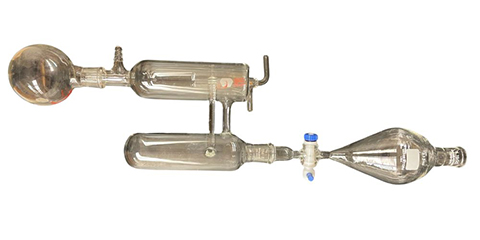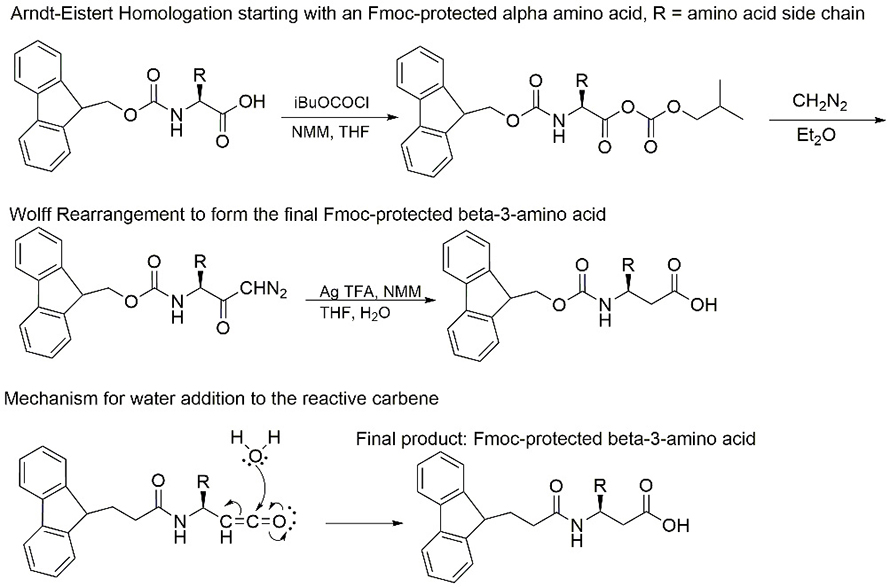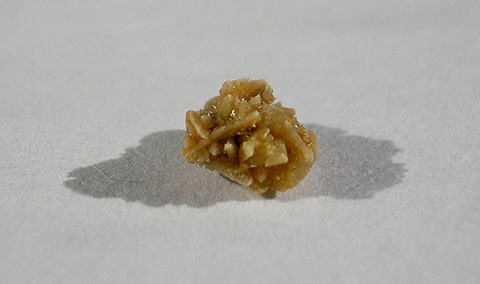
Water takes center stage
As a young scientist, I was told by my instructors that water was the “universal solvent.” Then, a few years later, that statement got a contingency — apparently, this was mostly just the case in life science. For a vast number of chemicals that are hydrophobic, water is more or less the enemy. I have seen my inorganic, organometallic colleagues working in glove boxes trying to keep out water as much as possible.
When I began to submerge myself in biochemistry studies, I was amazed at how important water is to the function of biological molecules. For example, proteins often fold so that their hydrophobic interiors are buried away from the contents of the cell, which are water-based. These very structures dictate the function of those proteins and can lead to enzyme active sites, vast intracellular architectures and compartmentalization.
So, we have the intricate workings of our cells, organs and tissues able to produce sight, hearing, motion, thought, language and all our critical activities. Each of these activities can be traced back, at least in part, to proteins whose functions are directly affected by their structure, which, in turn, is influenced by water.
I can think of a time or two that relates the power of water and its importance in biology and biochemistry to my own life.
The final step
During the first moments in my research group in graduate school, I was converting alpha amino acids (the type found in nature) to beta-3-amino acids. At that time, foldamers (non-natural folded oligomers) were a burgeoning field. My first tasks were to synthesize a library of beta-amino acids using the alpha versions as starting materials, then use these as building blocks in a long chain to make artificial peptides with nonnatural backbones. Each synthesis required two steps: the Arndt-Eistert homologation and the Wolff rearrangement.

As a first-year graduate student, I felt like a big shot performing these named reactions and creating compounds that had never been studied before. The coolest, and most dangerous, part was when we generated diazomethane (note: potentially explosive) gas as part of the process using specialized funky glassware, let it condense and add, dropwise, to our activated compound, and hoped the blast shield could contain any mishaps. We never had a single explosion, even when building construction work was shaking the floors.
How does this relate to water? In the final step of this multistep reaction (shown in the picture), a single molecule of water had the most important role — to make the new C-terminus of the new beta-amino acid and get it in its final format that gave it its amino acid characteristics (mechanism shown under the full reaction, provided). A highly reactive carbene intermediate primed the reaction so that water could slide in and make the molecule a stable beta amino acid ready for use in a peptide.
At this ending step, all the potentially explosive steps, then the separations and purifications culminated as we added this one, simple molecule to bring it home — finishing days of work.
We were so careful through the preceding steps to use dry glassware and try to keep water away; all our work would have been quenched by any significant quantity of water. But in this last stage, toss in some water and we’re finished.
At times, it felt a bit anticlimactic to end my syntheses this way, but such is the power of the water molecule. Indispensable, even as a single-molecule synthetic agent.

A contributing factor
Water is important to my life as a biochemistry professor in another, more personal way. In my sixth year of teaching, I was approaching the last week of biochemistry class for the spring semester, ready for the student group presentations about oxidative phosphorylation, when I was suddenly taken ill with a stuck kidney stone.

After hospitalization, surgery and a stent, I learned my lesson about proper hydration. While there are many reasons stones can form, I knew that, at least in part, dehydration contributed. I am generally bad about keeping up drinking water, and I had recently begun exercising again without increasing any fluid intake.
Did this impact my professional life as a biochemistry professor? Yes. And I have spoken to my classes about the benefits of water ever since.
Whether I’m using water in the lab for a critical synthetic step or drinking it before going into the lab to perform said critical step, water has such universal importance.
Not bad for a bent tetrahedral molecule with extensive hydrogen bonding.
Read more
Read more articles and essays about our ASBMB Molecule of the year.
Water, you say? Sephra Rampersad recalls a great scientist asking, what is the one critical component that could make or break your experiment in any lab?
What I’ve learned about water, aging and protein quality control Alice Liu thought an increase in heat shock protein chaperones would prevent misfolding in Huntington’s disease proteins. The results surprised her, and water was the key.
The subtle strength of hydrogen bonds Indu Sridharan remembers how water complicated her atomic force microscopy imaging studies of collagen.
The teaching power of water “I questioned whether children would be very interested in this exercise; there wasn’t much to it.” At an outreach event, Jessica Desamero learns that three cups of water can convey complex science.
Water rescues the enzyme “Sometimes you must bend the rules to get what you want.” In the case of using water in the purification of calpain-2, Dorothy Croall writes, it was worth the risk.
There are worse things in the water than E. coli E. coli levels determined whether Olympic swimmers could dive into the Seine this past summer. But are these bacteria the best proxy for water contamination? Andrea Luis investigates.
Molecular impressions of water as cuneiform cascade Inspired by "the most elegant depiction of H2O’s colligative features," Thomas Gorrell created a seven-tiered visual cascade of Sumerian characters beginning with the ancient sign for water.
Virtual issue celebrates water in ASBMB journals Check out a dozen gold open-access articles covering exciting research about the society’s 2024 Molecule of the Year.
Enjoy reading ASBMB Today?
Become a member to receive the print edition four times a year and the digital edition monthly.
Learn moreGet the latest from ASBMB Today
Enter your email address, and we’ll send you a weekly email with recent articles, interviews and more.
Latest in Opinions
Opinions highlights or most popular articles

Debugging my code and teaching with ChatGPT
AI tools like ChatGPT have changed the way an assistant professor teaches and does research. But, he asserts that real growth still comes from struggle, and educators must help students use AI wisely — as scaffolds, not shortcuts.

AI in the lab: The power of smarter questions
An assistant professor discusses AI's evolution from a buzzword to a trusted research partner. It helps streamline reviews, troubleshoot code, save time and spark ideas, but its success relies on combining AI with expertise and critical thinking.

How AlphaFold transformed my classroom into a research lab
A high school science teacher reflects on how AI-integrated technologies help her students ponder realistic research questions with hands-on learning.

Writing with AI turns chaos into clarity
Associate professor shares how generative AI, used as a creative whiteboard, helps scientists refine ideas, structure complexity and sharpen clarity — transforming the messy process of discovery into compelling science writing.

Teaching AI to listen
A computational medicine graduate student reflects on building natural language processing tools that extract meaning from messy clinical notes — transforming how we identify genetic risk while redefining what it means to listen in science.

What’s in a diagnosis?
When Jessica Foglio’s son Ben was first diagnosed with cerebral palsy, the label didn’t feel right. Whole exome sequencing revealed a rare disorder called Salla disease. Now Jessica is building community and driving research for answers.

